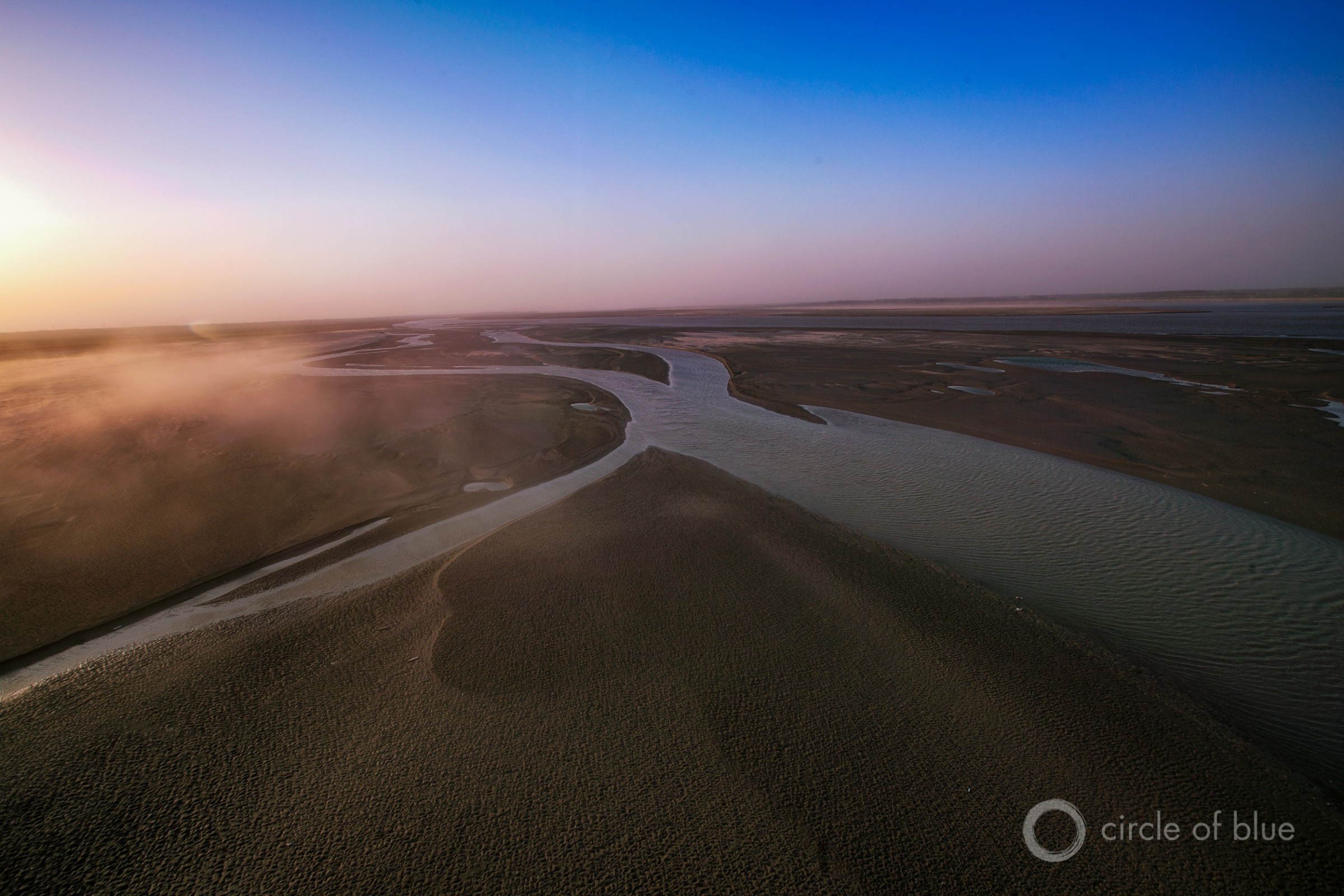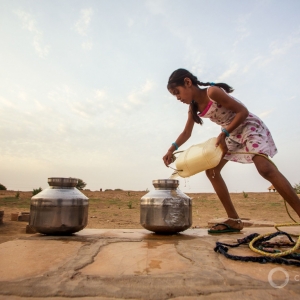The Stream, April 19, 2023: Iron Mine in Sweden Could Undercut UNESCO Indigenous Protections

The Yellow River in northern China. Photo © Aaron Jaffe/Circle of Blue
YOUR GLOBAL RUNDOWN
- In northern Sweden’s Laponian Area — traditional homelands of the Sámi people and a UNESCO World Heritage site — a proposed iron mine threatens waters and caribou habitat.
- As shortages in the Yellow River continue, water users in northwest China’s Hetao Plain and Mongolia are put on high alert.
- Plans to expand irrigation systems near Doñana National Park, known for its protected wetlands, marshes, and lake systems, cause controversy in Spain.
- In the wake of a proposal to create an artificial lake near Jackson, Mississippi, the Pearl River has been listed as one America’s most endangered rivers.
Erratic and extreme rain events, brought on by climate change, are disrupting Costa Rica’s coffee farming traditions.
“Growing up I remember how crazy it was trying to pick all of the fruits before they went bad or the birds ate them all. Now I hear my parents discussing the decrease in [coffee] yields and issues with fungal pathogens that may force them to give up on the farm and it breaks my heart.” — Diana Vargas Hernández, daughter of coffee farmers in Puntarenas.
In a biodiverse region, a changing climate is straining one of Costa Rica’s top export industries. Erratic rainfall, rising temperatures, and a resulting rise in fungal and insect pests are menacing the Central American country’s 50,000 small, family-owned coffee farms, Yale Climate Connections (YCC) reports.
Though relatively small on the global scale, Costa Rica’s coffee exports support local economies while maintaining deeply rooted farming traditions, YCC reports. Family farms are searching for creative ways to sustain themselves amidst these changes, all while coexisting with and conserving the nearby tropical rainforests — for which farmers receive a small amount of compensation from the government.
— Christian Thorsberg, Interim Stream Editor
Recent WaterNews from Circle of Blue
- U.S. Pushes Farmers to Develop A New Crop: Energy — But more heavily fertilized corn and more manure for methane raises worries about water pollution.
- Biden Administration Outlines Options for Colorado River Emergency Plan — Arizona, California, and Nevada could lose up to a quarter of water deliveries combined next year if conditions are bad.
The Lead
The Laponian Area — the traditional homelands of the Sámi (Saami) people and a biodiverse wilderness of marshes, river systems, and lakes in northern Sweden’s Arctic Circle — was designated as a UNESCO World Heritage site in 1996, on the basis of both cultural and natural beauty and significance.
The land is now part of a growing list of World Heritage sites stewarded by Indigenous communities that are being threatened by outside development, Indian Country Today and Grist report.
An iron mine to be built just 20 miles outside the Laponian border was recently approved by the Swedish government. The Sámi say that the mine’s construction will drastically impede the migration of reindeer, upon which the community relies, and cut paths and “sever routes Sámi families and villages have relied upon for centuries.” In other words, the mine would destroy the qualities the UNESCO designation was meant to protect.
These actions highlight a global trend, Grist reports. Many of the 1,157 heritage sites have historically been protected by Indigenous people or still are. At the same time, the sites are crucial sources of water or carbon storage.
A UNESCO designation is proven to propel tourism. To capitalize, governments have in some cases evicted communities from their World Heritage homelands: the Maasai of Tanzania, for instance, and the Karen in Thailand.
This Week’s Top Water Stories, Told In Numbers
59
Percent of the large lakes in Doñana, a 320,000-acre wetlands preserve in Spain, that haven’t been full since 2013, prompting a “critical condition” designation by scientists. The preserve’s largest lake shrunk to the size of a puddle last year, The Guardian reports. It was the third time in 50 years that it happened. Doñana is in the news again as the Andalucían regional government has proposed that nearly 2,000 acres around the preserve — which, for the past 30 years, has seen its freshwater landscape deteriorate due to pollution, farming, and drainage — be allocated for strawberry farming. Doñana is a UNESCO World Heritage Site.
3
Number of times since 2008 that the Pearl River, which flows from central Mississippi to the Gulf of Mexico and is the primary source of drinking water for Jackson, has been listed as one of America’s “most endangered rivers” by American Rivers. The listing follows a controversial proposal to construct a $342-million artificial lake near the state capital, “with critics saying it would wipe out 2,500 acres of mostly wetlands and could actually worsen flooding in Mississippi,” Nola.com reports.
On the Radar
Authorities in northwest China have issued alerts to agriculturalists in the Hetao Plain, as flows in the Yellow River, which supplies much of the region’s water, are down 28 percent compared to last summer and autumn, the South China Morning Post reports. Planting drought-resistant crops and moving away from water-intensive ones have been suggested as the “dry year” is expected to take hold. Meanwhile, forecasts show that this year could begin a series of low-precipitation years — irrigation allotments for both Ningxia and Inner Mongolia could slip in the near future.
More Water News
Romania: More than 40 years after a copper mine displaced hundreds of families in western Romania, the remnants of its tailing pond’s toxic runoff have discolored the landscape with pastel hues, creating a “strange beauty at the heart of an ecological disaster,” Emergence Magazine reports.
Sudan: As rival forces continue their violent conflict in Sudan, residents of the capital Khartoum are running out of drinking water, BBC reports.
Christian Thorsberg is an environmental writer from Chicago. He is passionate about climate and cultural phenomena that often appear slow or invisible, and he examines these themes in his journalism, poetry, and fiction.







Leave a Reply
Want to join the discussion?Feel free to contribute!